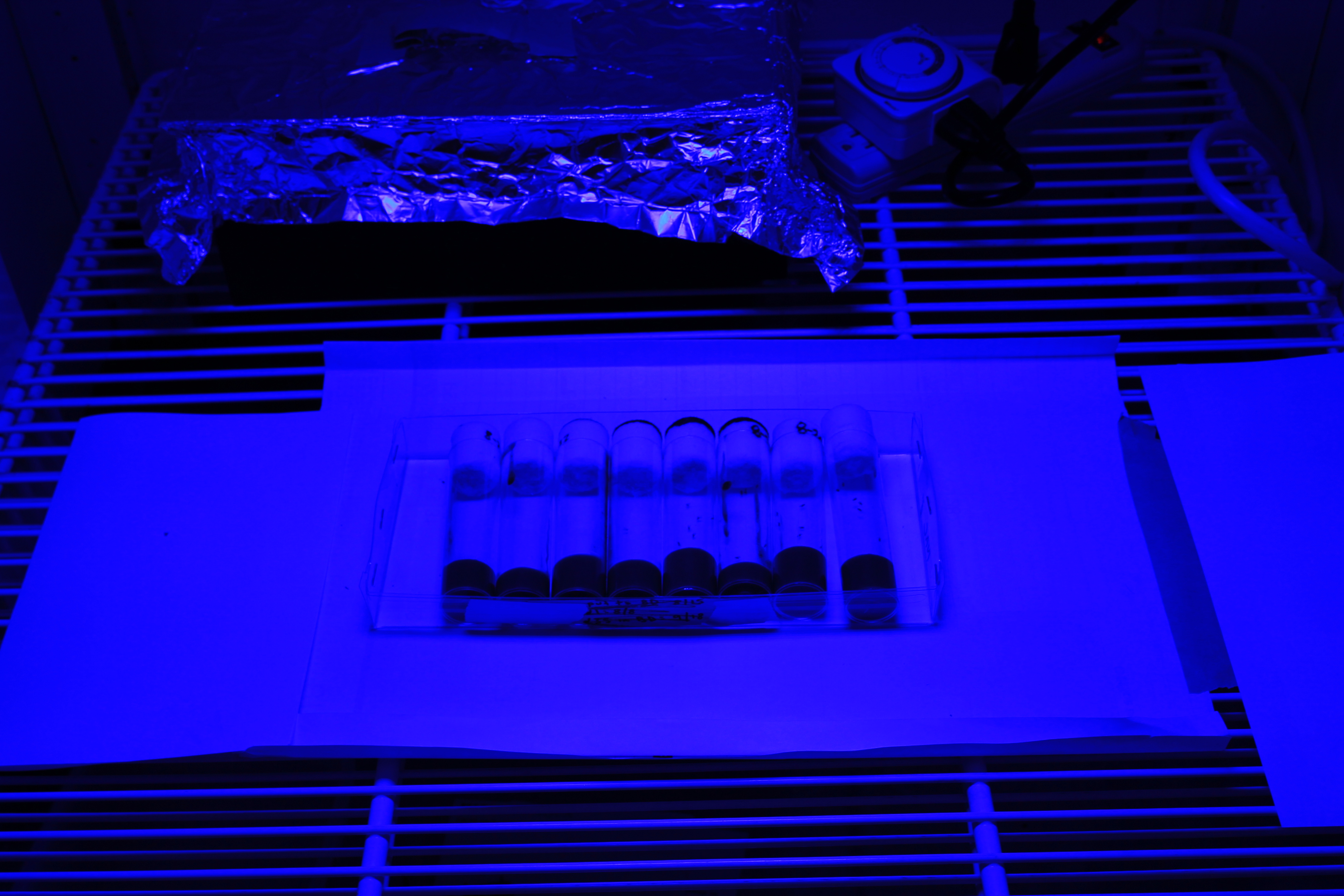A new study by researchers at Oregon State University suggests that the blue wavelengths produced by LED damage cells in the brain as well as retinas.
The study, published in Aging and Mechanisms of Disease, involved a widely used organism, Drosophila melanogaster, the common fruit fly, an important model organism because of the cellular and developmental mechanisms it shares with other animals and humans.
Jaga Giebultowicz, the researcher from the OSU College of Science, has led a research collaboration that examined how flies responded to daily 12-hour exposures to blue LED light – similar to the prevalent blue wavelength in devices like phones and tablets – and found that the light accelerated aging.

(Image: Oregon State University)
Flies subjected to daily cycles of 12 hours in light and 12 hours in darkness had shorter lives compared to flies kept in total darkness or those kept in light with the blue wavelengths filtered out. The flies exposed to blue light showed damage to their retinal cells and brain neurons and had impaired locomotion that the flies’ ability to climb the walls of their enclosures, a common behavior, was diminished.
Some of the flies in the experiment were mutants that do not develop eyes, and even those eyeless flies displayed brain damage and locomotion impairments, suggesting flies didn’t have to see the light to be harmed by it.
Many previous studies have noted that natural light is crucial for the body’s circadian rhythm which is a 24-hour cycle of physiological processes such as brain wave activity, hormone production and cell regeneration that are important factors in feeding and sleeping patterns.
“But there is evidence suggesting that increased exposure to artificial light is a risk factor for sleep and circadian disorders,” she said. “And with the prevalent use of LED lighting and device displays, humans are subjected to increasing amounts of light in the blue spectrum since commonly used LEDs emit a high fraction of blue light. But this technology, LED lighting, even in most developed countries, has not been used long enough to know its effects across the human lifespan.”
According to Giebultowicz, flies would avoid blue light if given a choice. She said, “We’re going to test if the same signaling that causes them to escape blue light is involved in longevity.” she said.





 CN
TW
EN
CN
TW
EN






